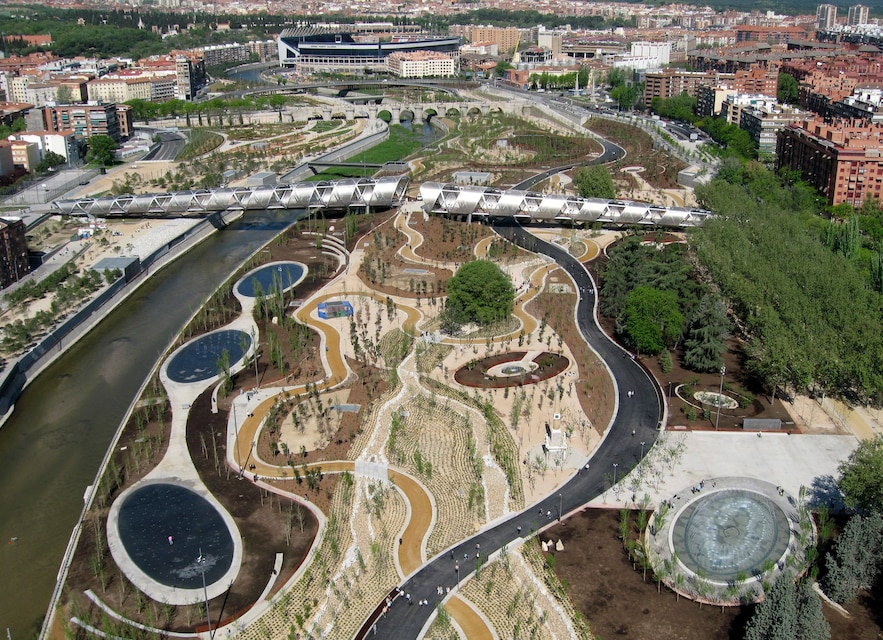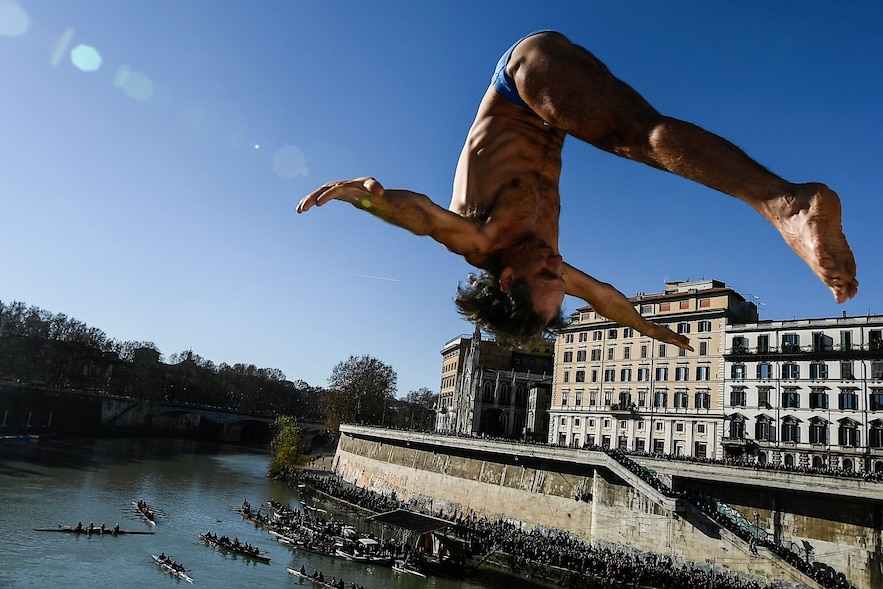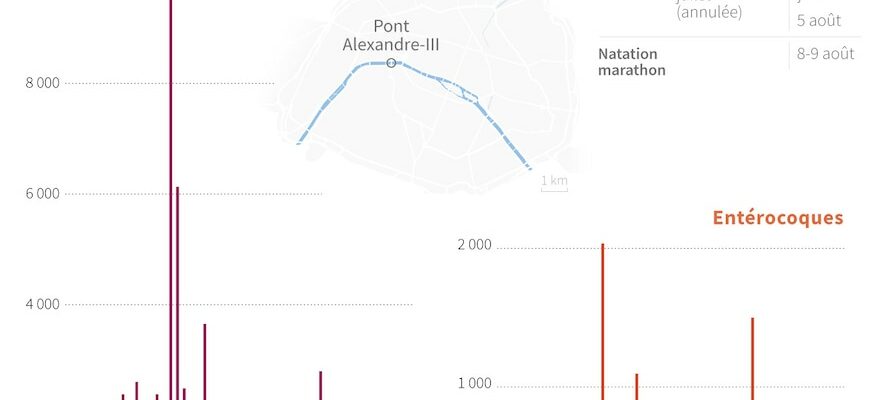On the eve of the Paris 2024 Olympic Games, the Seine welcomed French personalities into its bed in order to attest that the river was, against all odds, indeed compliant with health standards. Amélie Oudéa-Castéra, Minister of Sports, then the Mayor of Paris Anne Hidalgo and Tony Estanguet did not fail to show off, dressed all in acrylics, for the time of a board and a few breaststroke movements between the Parisian quays. It must be said that in addition to the 1.5 billion euros invested in its purification, the start of the Games was approaching and the Seine was still not up to standard for swimming. The heavy rains of a wet spring did not allow the purification of the river, whose concentration of the E. Coli bacteria regularly exceeded the regulatory levels.
But the clearing came at the beginning of July, giving the aforementioned officials their moment of jubilation. All’s well that ends well. A victory on the wire, ric-rac, like the most famous film heroes, rolling through the gate which, closing, threatens them with certain death. Generally, as heroes oblige, their ease even allows them to put their arm back in to retrieve the headgear, which fell during the acrobatics. But there, the electric curtain fell on the protagonist.
The triathlon event, which was supposed to take place on Tuesday, July 30, has been postponed by 24 hours due to the heavy rains of the last few days. There is cause for concern because the organization will not be able to postpone the competition indefinitely. The latter will take place, at the latest, on August 2. After that, a “duathlon” (running + cycling but without swimming) will take place, a solution chosen in the event that the white smoke does not come out by the deadline. The French pitfalls echo those of other major European capitals, which are not all at the same point in terms of the swimmability of their waterways.
The men’s triathlon event scheduled for Tuesday, July 30, 2024 has been postponed to Wednesday for “health reasons.”
© / Valentina BRESCHI, Sabrina BLANCHARD / AFP
The Spree, forbidden to Berliners in some places

One project, das Flussbad Berlin, aims to rehabilitate “an 840-metre stretch of the Spree Canal between Schlossplatz” to make it a “place of relaxation […] and to present a hygienic and ecological water quality”.
© / afp.com/Johannes Eisele
In 2023, the German capital had 39 bathing spots, often fed by nearby rivers, including the Spree. But these watering holes – like the Müggelsee – are deep bodies of water. Located upstream of the metropolis – protecting themselves from industrial pollution resulting from Berlin’s economic activity – their pollutant and bacteria content is regularly monitored. This is not the case for the Spree, which meanders right through the city centre, the online magazine tells us tipBerlin.
In an article published in July 2023, the Berlin daily Berlin Morning Post informed: “Swimming is not permitted on the landing stages, under bridges and in locks. Furthermore, swimming is prohibited in the Spree, completely. It is a federal waterway and no matter where you swim, you can be removed by the police.”
But a project, the Berlin Flussbadwishes to rehabilitate “an 840-metre section of the Spree Canal to make it a “place of relaxation […] which would have hygienic and ecological water quality,” according to tipBerlin. Preparations have been underway since 2019 and the project is supported to the tune of 70 million euros by the Berlin Senate.
Madrid does not count on Manzanares

“[Le Manzanares] “is a metaphysical river, which only exists under the pen of poets,” wrote Miguel de Cervantes, the famous Spanish author of Don Quixote.
© / MaxPPP/EFE
“[Le Manzanares] “is a metaphysical river, which only exists under the pen of poets,” wrote Miguel de Cervantes, the famous Spanish author of Don QuixoteThe quote was taken up in 2006 by a column by the writer Julio Llamazares in the daily newspaper The CountryThe heir of Cervantes wanted to restore the image of this puny waterway, barely 87 kilometres long, which crosses the Spanish capital.
Just like in Berlin, the Madrid authority regulates the bathing places. In the metropolis, there are only four of them left. Until 2016, the Charca Verde site located upstream of the river was accessible. However, being located in the Cuenca Alta del Manzanares Regional Park and the Sierra de Guadarrama National Park, it is no longer possible to go there for environmental reasons.
In 2014, the online media 20 minutes was interested in the behavior of Madrid bathers who did not respect the bathing areas defined by the community. The newspaper focused on the town of El Pardo, upstream of the city, where people came to cool off in the small waters of the Manzanares. “There, the river has a low flow, it carries a large amount of mud and has a brownish appearance,” the media reported.
The Tiber, younger brother of the Seine

The main thorn in the Tiber’s side is one of its tributaries, the Aniene, which flows through the eastern suburbs of the city of seven hills.
© / afp.com/Filippo MONTEFORTE
It has been 60 years since the Tiber (Tevere in Italian) was no longer accessible for swimming, with one exception. Every January 1st, daredevils jump from the Cavour Bridge to celebrate the New Year. “With the economic boom, industries inside and outside the metropolitan city of Rome are developing. It is at this time [dans les années 70] that the administration introduced the first ban on bathing due to the risk of leptospirosis: an infectious disease whose bacteria had contaminated Roman waters”, the Sardinian news site informs us, Vistanet.
Besides the bacteriological problem, the main thorn in the Tiber’s side is one of its tributaries, the Aniene, which crosses the eastern suburbs of the city of seven hills.[Il] has been for decades, and unfortunately still is, the collector of industrial discharges, often unregulated. Even if the levels ofEscherichia coli “If the rivers were normal, I would not swim in a river that I knew was chemically polluted,” a researcher from the Regional Agency for Environmental Protection told the daily newspaper The Republic.
But Rome has ambition. In the fall of 2023, the city’s mayor, Roberto Gualtieri, declared, according to comments reported by The Republic : “It is a goal that we can set for ourselves”, the quote is supported by a speech by his environmental advisor, Sabrina Alfonsi, who stated that: “Restoring the swimmability of the Tiber would be the natural outcome of the work that we are doing.”
The Thames, a little ahead of time

“[Le fleuve] “It is a very high throughput waterway and is the UK’s busiest inland waterway, handling over 20,000 vessel movements and hosting more than 400 events each year,” the port authority said.
© / afp.com/JUSTIN TALLIS
The Thames does not have a reputation as a clean river. This is probably due to the Industrial Revolution. In the mid-19th century, it was even called the “Great Stink”, as all the city’s sewage flowed into it. Last April, during the traditional boat race between the universities of Oxford and Cambridge, the decision was made not to throw the winners into the water as is usually done. Why? A sample taken showed too high a concentration of the bacteria E. Coli.
Yet the Thames is – among the rivers mentioned above – the only one to have a bathing area in the city centre. The Port of London Authority – Port London Authority – delimits it upstream from Putney Bridge to the town of Teddington. But it advises against swimming because the river has the particularity of being subject to tides due to its proximity to the North Sea.[Le fleuve] “It is a very high throughput waterway and is the UK’s busiest inland waterway, handling over 20,000 vessel movements and hosting more than 400 events each year,” the port authority said.
Sadiq Khan, the Mayor of London, announced a decade-long plan to make the river “safer” in April. The plan will address the problems posed by Thames Water, which supplies water and treats wastewater in the area. “Sewage discharges have increased fivefold in the last year, putting the company at the forefront of a national scandal and scrutiny – all while managing its revenues, since it is in debt to the tune of 15 billion of books,” reports the online media Thred.
In the meantime, the city will be able to count on the Tideway Tunnel this summer, which will connect 34 storm drains and sewers to a treatment centre in east London. It cost more than £5bn to build and will aim to reduce the amount of raw sewage discharged into the Thames.
